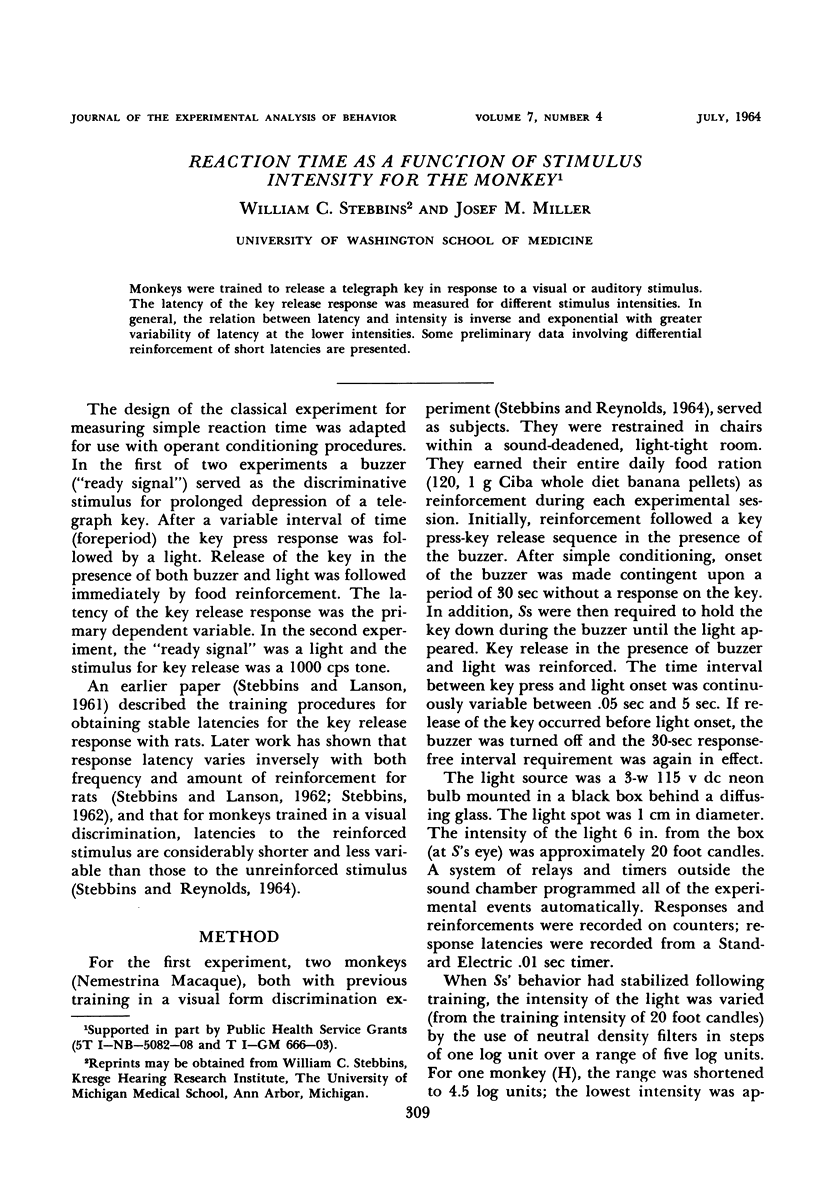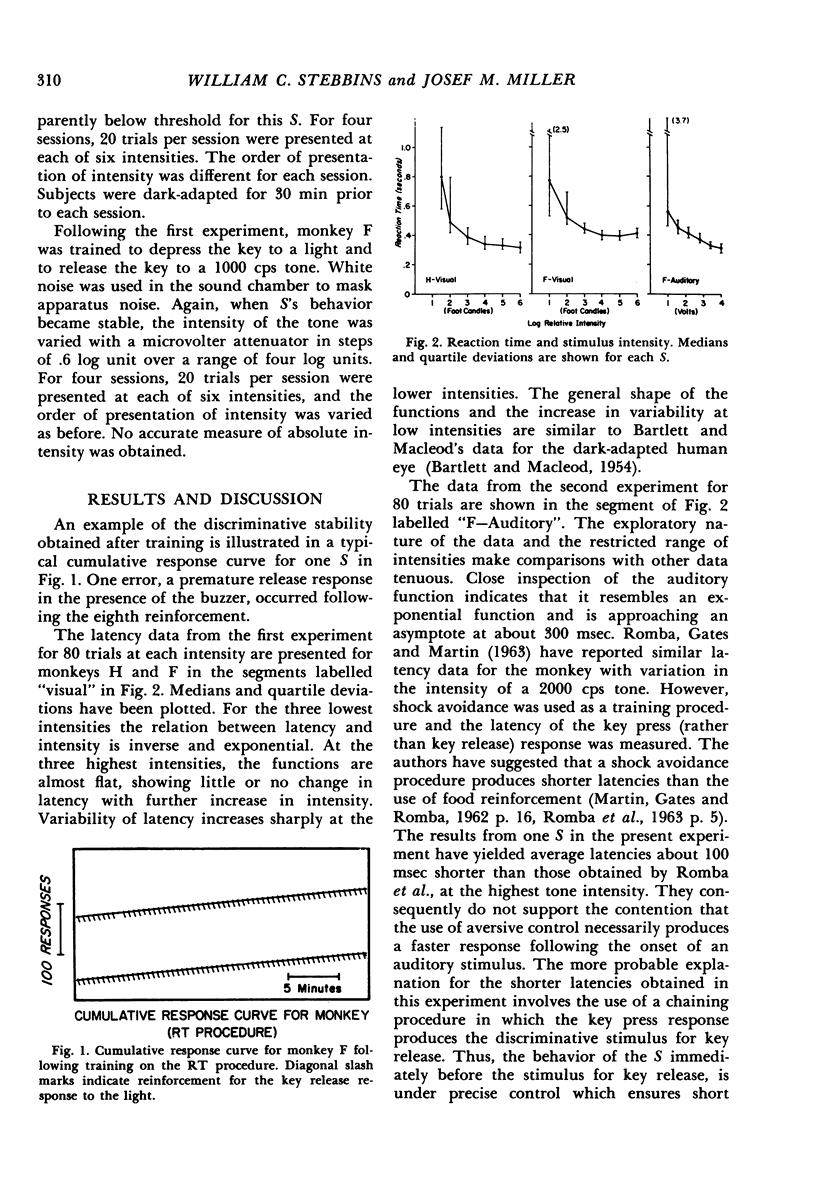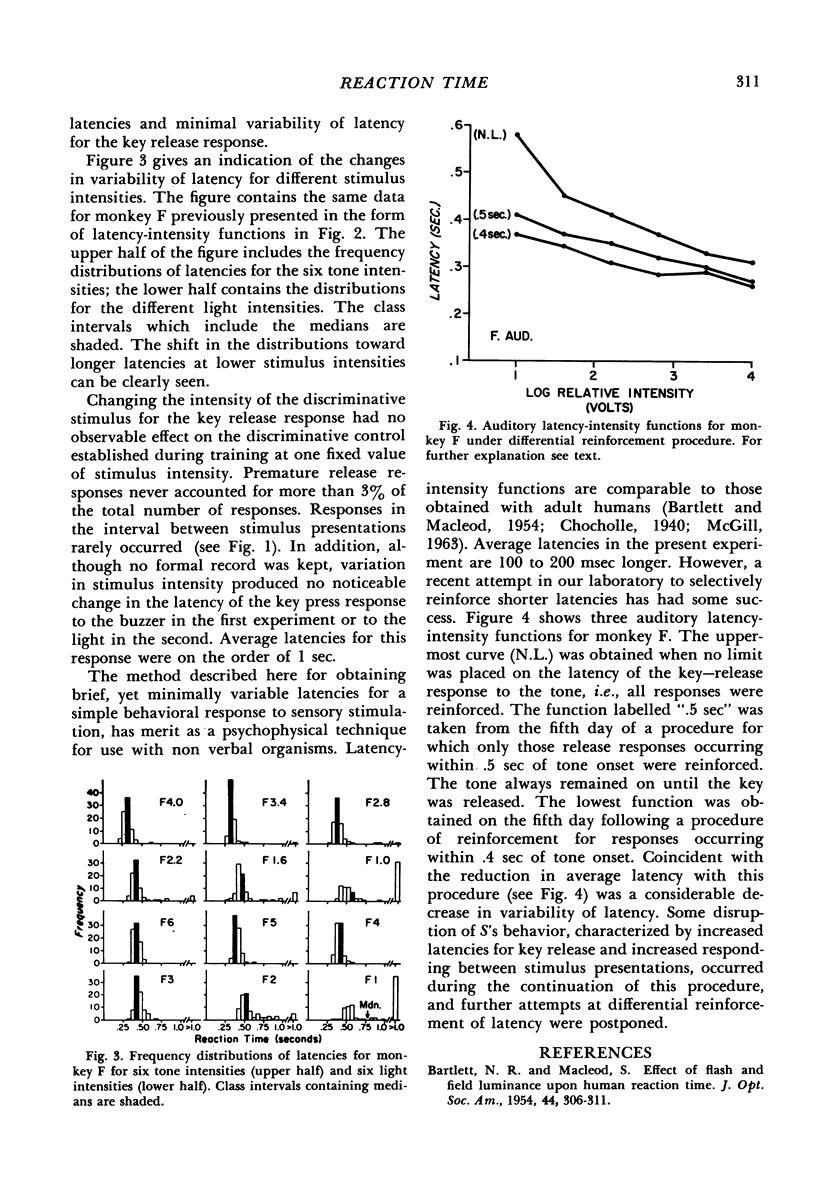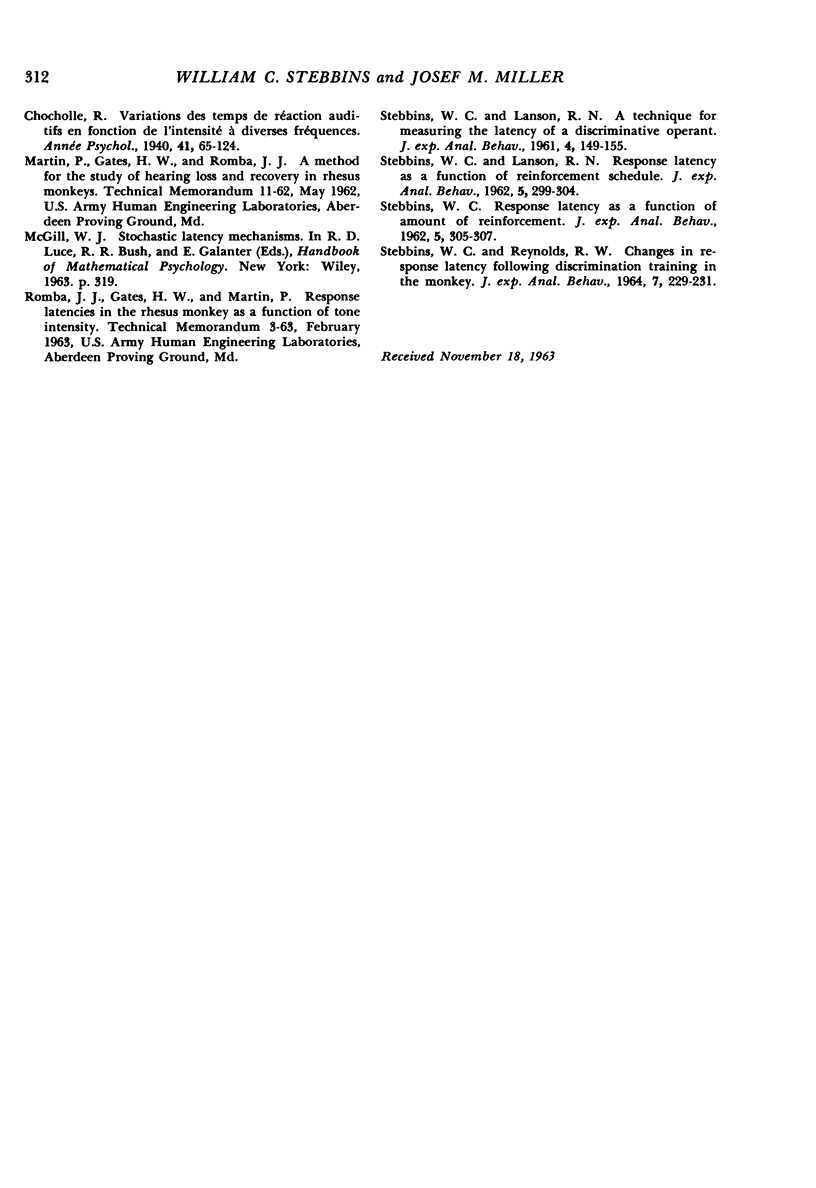Abstract
Monkeys were trained to release a telegraph key in response to a visual or auditory stimulus. The latency of the key release response was measured for different stimulus intensities. In general, the relation between latency and intensity is inverse and exponential with greater variability of latency at the lower intensities. Some preliminary data involving differential reinforcement of short latencies are presented.
Full text
PDF



Selected References
These references are in PubMed. This may not be the complete list of references from this article.
- BARTLETT N. R., MACLEOD S. Effect of flash and field luminance upon human reaction time. J Opt Soc Am. 1954 Apr;44(4):306–311. doi: 10.1364/josa.44.000306. [DOI] [PubMed] [Google Scholar]
- STEBBINS W. C., LANSON R. N. Response latency as a function of reinforcement schedule. J Exp Anal Behav. 1962 Jul;5:299–304. doi: 10.1901/jeab.1962.5-299. [DOI] [PMC free article] [PubMed] [Google Scholar]
- STEBBINS W. C., REYNOLDS R. W. NOTE OF CHANGES IN RESPONSE LATENCY FOLLOWING DISCRIMINATION TRAINING IN THE MONKEY. J Exp Anal Behav. 1964 May;7:229–231. doi: 10.1901/jeab.1964.7-229. [DOI] [PMC free article] [PubMed] [Google Scholar]
- STEBBINS W. C. Response latency as a function of amount of reinforcement. J Exp Anal Behav. 1962 Jul;5:305–307. doi: 10.1901/jeab.1962.5-305. [DOI] [PMC free article] [PubMed] [Google Scholar]
- Stebbins W. C., Lanson R. N. A technique for measuring the latency of a discriminative operant. J Exp Anal Behav. 1961 Apr;4(2):149–155. doi: 10.1901/jeab.1961.4-149. [DOI] [PMC free article] [PubMed] [Google Scholar]


